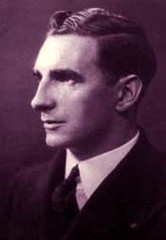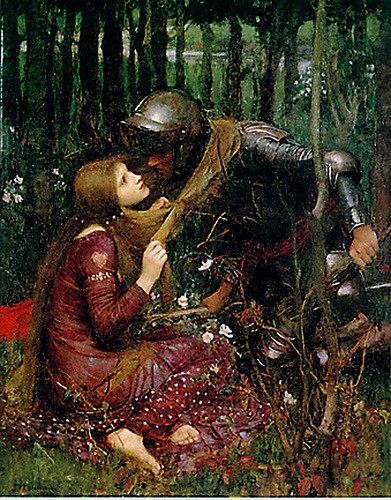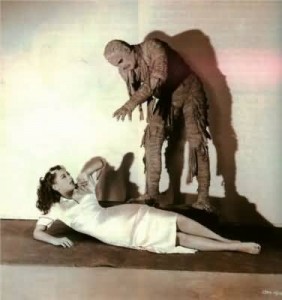This story was first published in 1933, then remained out of print for forty-three years until its appearance in Hugh Lamb’s Return From the Grave. And that’s a real shame. Lamb doesn’t mention where he found this story but a little web-surfing got a result at the wonderfully retro Gruesome Cargoes, where it’s revealed that this one first appeared in Don’t Turn On The Light, the ninth volume in Christine Campbell Thompson’s famous Not At Night series. Furthermore, the administrator of Gruesome Cargoes (and the even more astonishing Vault of Evil) has listed this story as one of his ten favourites from the Not At Night series.
The story is slight, but boy is it written with energy! Old Madge is suspected of witchcraft and evicted from her hovel in the woods, but soon after this, Jack Bairdsley and his brother Paul are walking through the frost-white woods to establish a right of way, when:
‘Down the centre of the ride, a small white object was rapidly approaching. About twenty to thirty yards ahead of the two men was the junction of the foot-path that led to the old woman’s abode – an evil tumble-down cottage. At this junction, the creature, for such it was, stopped.
 |
| Christine Campbell Thomson Editor of the famous Not At Night series of horror anthologies. |
‘Down the centre of the ride, a small white object was rapidly approaching. About twenty to thirty yards ahead of the two men was the junction of the foot-path that led to the old woman’s abode – an evil tumble-down cottage. At this junction, the creature, for such it was, stopped.
‘It was a stoat in its winter disguise – a veritable ermine.’
Before long old Madge is wreaking bloody havok as a pack of stoats attack the stables then the farm.
Before long old Madge is wreaking bloody havok as a pack of stoats attack the stables then the farm.
‘Within, the scene was appalling. Three horses were down and still; from the remaining two, whose necks were covered in living fur, came feeble squeals and kicks as they, too, lay in their stalls.’
If you’ve had enough of bluff heroic types battling to overcome evil, you’ll love the end of this one.
If you’ve had enough of bluff heroic types battling to overcome evil, you’ll love the end of this one.
Regretfully, this is the only story I can find from this author.
My thanks as always go to the energy and enthusiasm - and horrific taste - of the administrator of Vault of Evil and Gruesome Cargoes for his research and apparently tireless posting.
My thanks as always go to the energy and enthusiasm - and horrific taste - of the administrator of Vault of Evil and Gruesome Cargoes for his research and apparently tireless posting.







